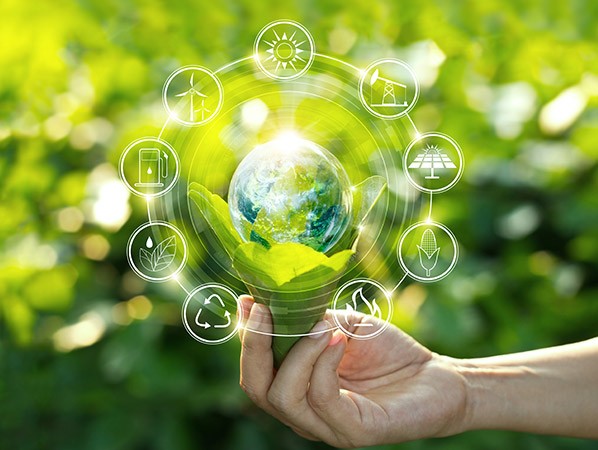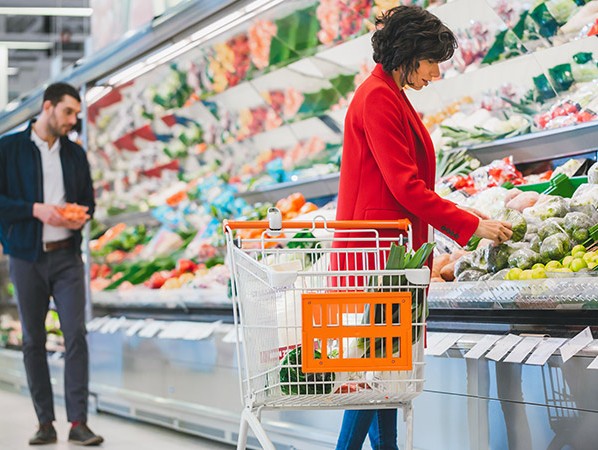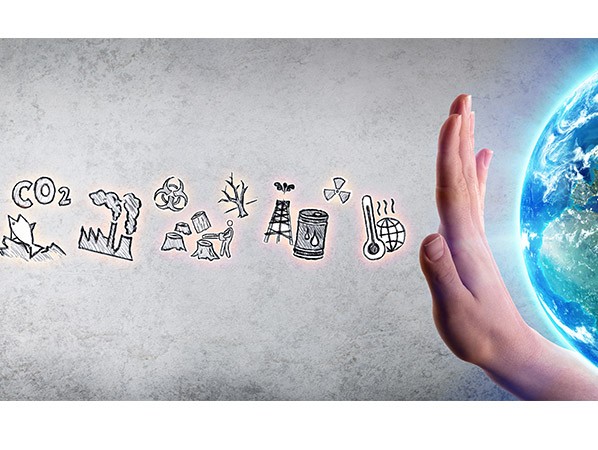
What will we eat in 2050? Can we make our food production more sustainable? Who is going to pay for the transition to a circular economy? Is it the responsibility of the government, of the industry, or of the consumer? Politicians are falling over each other about this issue. So, who has the answer?
Since the Climate Summit in Poland, the discussion about climate change fans out in all directions. There is nobody who is not going to be affected. Can we still eat meat, or should all meat be banned? Can we travel by plane or not, take our daily shower, light the fireplace or fireworks, or can we still have pets? Everything is getting a CO2 label.
And that is where the discussion starts. Because there is no one who knows how this CO2 footprint must be calculated. Which aspects can be included and which not? How do we weigh the various elements in the total sum? There is no acknowledged or accepted global standard, which makes a sound comparison between products and services sheer impossible. The exact costs and benefits are unclear. And yet, the 'hard figures' that are used by companies, institutions, and political parties implicate an objective image.
To give an illustration: Stichting Agri Facts (STAF), an association that checks the correctness of scientific facts in the agricultural sector, was angry with the Netherlands Environmental Assessment Agency (PBL) because the PBL had issued 'rather unsubstantiated' reports about the impact of the meat industry on our climate. This was the comment of STAF based on the PBL reports about 'the significant climate benefits' if the overall meat consumption would be halved. Initially, the PBL forecasted that the climate benefits would be a reduction of 25 to 40 percent in greenhouse gases. STAF requested the PBL to correct its incorrect reports. The PBL made the correction but failed to mention the actual climate benefits of a reduction of the meat consumption. According to STAF, the actual figures could be relatively easily deducted from the international scientific research on which PBL said to have based its conclusions, namely a 2 to 4 percent reduction in greenhouse gases, depending on which meat will be consumed less: chicken, pork, or beef. STAF is particularly concerned because, within the rollout and execution of the climate agreement, PBL is both the supplier of knowledge as well as the body that provides the figures to the Government. "This requires transparent and correct information and data."
The things that are quite clear, are the hard goals established by the government for the reduction of CO2 emissions. In 2050, the Netherlands wants to be an entirely circular economy; an economy without waste. This year, the Cabinet has an additional budget of 2.5 million to support sustainable and circular initiatives. And according to the Cabinet, the draft Climate Agreement has 'an extensive and comprehensive package of measures that can be used by the Netherlands to achieve at least a 49% reduction of the CO2 emission by 2030'. Unfortunately, the road is still very hazy. After months of negotiating, the Climate Agreement was presented late December 2018. This agreement must be an important milestone on the road to a new Dutch climate policy that focuses on a fifty percent reduction of the CO2 emission by 2030. But the Agreement has not been finalised yet. The PBL and the Netherlands Bureau for Economic Policy Analysis (CPB) are still in the process of calculating the plans. "The principle for all measures is that the transition must be attainable and affordable for everyone”, says Ed Nijpels, Chairman of the Climate Council. He states that this distribution issue is a 'particularly political issue': "Clear and justifiable choices must be made with regard to the distribution of the joys and the burdens." And that is where the pain is: the support for the Climate Agreement appears to be more wide-spread than the question of who pays the bill.

The FNLI, Federation for the Dutch Food Industry, is one of the co-authors of the texts provided by the Sector Table for the Industry and the Sector Table for Agriculture and Land Use. Over the coming period, the FNLI will present the Climate Agreement to its members and supporters for agreement. One of the responses of the FNLI is that, for the food industry, the energy-saving measures must be given priority. "The industry has been successfully focusing on energy savings for many years already, through multi-annual agreements. And over the coming years, the food industry will keep investing heavily in the climate goals. It will be a challenge to fulfil these ambitions, whereby the electrification of processes and a sufficient supply of affordable green energy is crucial."
What are the odds that this Climate Agreement will be signed by all parties? Mid-January, two of the coalition partners threatened to bring down the Cabinet if the Climate Agreement is not to be executed according to their wishes. Organisations like Greenpeace, Milieudefensie (Environmental Defence Organisation), Natuur & Milieu (independent environmental organisation), CSR Netherlands, and the FNV trade union all state that they find no ground to support the Agreement. "Early 2018, we joined the discussions to come to an ambitious and fair agreement. After negotiating for almost a year now, the result proves to be well below par. When it comes to the costs, the major polluters get away scot-free again. Without a fair distribution of the joys and the burdens, the Agreement will be crippled before it comes into effect." They are particularly disappointed about the text for the Sector Table for the Industry. "It has no water-tight arrangements that the industry will live up to its promises: a CO2 reduction of 19.4 Mton. In order to reach a future-proof agreement, the Cabinet must now establish structural solutions. When the fundamental issues are not solved, we will not sign the ultimate agreement." So, the ball is now in the Cabinet's court, and a strongly divided Cabinet it is.
Certainly, one of the main problems is the issue of 'the joys and the burdens'. Who is going to pay the bill? The government grants subsidies. It sets the frameworks and guidelines, of which some say they are too strict, and others say that they are not ambitious enough. But, ultimately, it is the citizen, the consumer, who has to open his purse directly or indirectly.
In the Dossier Duurzaam 2018 (Sustainability File 2018) market research conducted by GfK and b-open, the conclusion is that 'The willingness of consumers to pay extra for sustainable products increases’. Nearly half of the respondents (46%) indicated that they find sustainability or social responsibility aspects important when they purchase products and services. This is even higher, more than 60%, when it comes to energy, white goods, and various food categories. "People want to consume without a guilty conscious. Additionally, the increased quality of sustainable products is a factor”, says Annemarie Perquin of GfK. At the same time, the mistrust with regard to sustainability claims has increased as well: from 39% in 2017 to 43% in 2018. "The consumer becomes more and more critical. Empty promises are no longer accepted."

The figures from the Monitor Keurmerken Retail (Retail Quality Label Monitor), carried out by research agency IRI, shows that the awareness for sustainability amongst citizens seems to grow: the supermarket sales of food with an independently assessed sustainability quality label has increased again last year. ‘With a growth of 20%, the quality label added over 300 million Euros in supermarket sales during the first half of 2018’, states the IRI. Compared with the regular growth in supermarket sales of 2.6% in the same period, products with a quality label clearly gain ground. The share of products with a quality label is especially large for fish, meat, coffee, and tea. IRI expects that the growth will see a boom in 2019.
However, there are other messages. Research among 1,080 consumers, conducted by Elbuco, shows that the consumer is not quite as sustainability-minded as presumed. With regard to the delivery of ordered products, more than half of the respondents clearly chooses speed over sustainability. Nearly two-thirds of the group also says that they are not willing to pay extra for sustainable, energy-neutral deliveries. And with the recent 3% rise of the VAT on consumer goods, it remains to be seen whether the consumer is inclined to pay more in practice.
Nevertheless, many manufacturers and retailers now consider sustainability as a strategy to create added value to their brand or formula. They feel the need to obtain knowledge and practical insights into the area of the consumers' food choice behaviour. To contribute to a healthier and more sustainable purchase and eating pattern, Wageningen Economic Research, the Louis Bolk Institute, and Greendish collectively set up a public-private partnership (PPP): Food Value Impact (FVI). Its purpose is to reduce the environmental impact and/or food waste while, at the same time, positively affect the health and satisfaction of guests. One of the conclusions of an initial study is that 'consumers will sooner choose more sustainable food with less meat when these choices are presented in a smart and attractive manner'. To tackle the food waste issue, countless initiatives have already been set up, such as the apps 'togoodtogo', and NoFoodWasted, and the WhatsApp Kitchen Assistant of the Voedingscentrum (Nutrition Centre). Another initiative is the launch of the association called 'Samen Tegen Voedselverspilling' (Battle against Food Waste). The association consists of a rapidly growing group of multinationals, SMEs, and startups. They are supported by the Wageningen Food & Biobased Research, Food Tech Brainport, the Surplus Food Factory in Veghel, and the Rabobank.
One thing is clear: the concerns about our climate, the energy supplies, and sustainable food production are high on the agenda worldwide. And structural changes are necessary to come to a circular economy. Even so, circular ideas are difficult to put into practice. Especially when a circular production is more expensive than pollution and wastage. People have discussions, deliberate and weigh the options, they are looking at the competition and wait and see. But what it all comes down to, eventually is this: just start. Somewhere. With something. Together.
Every little bit helps.
Source: © Vakblad Voedingsindustrie 2019